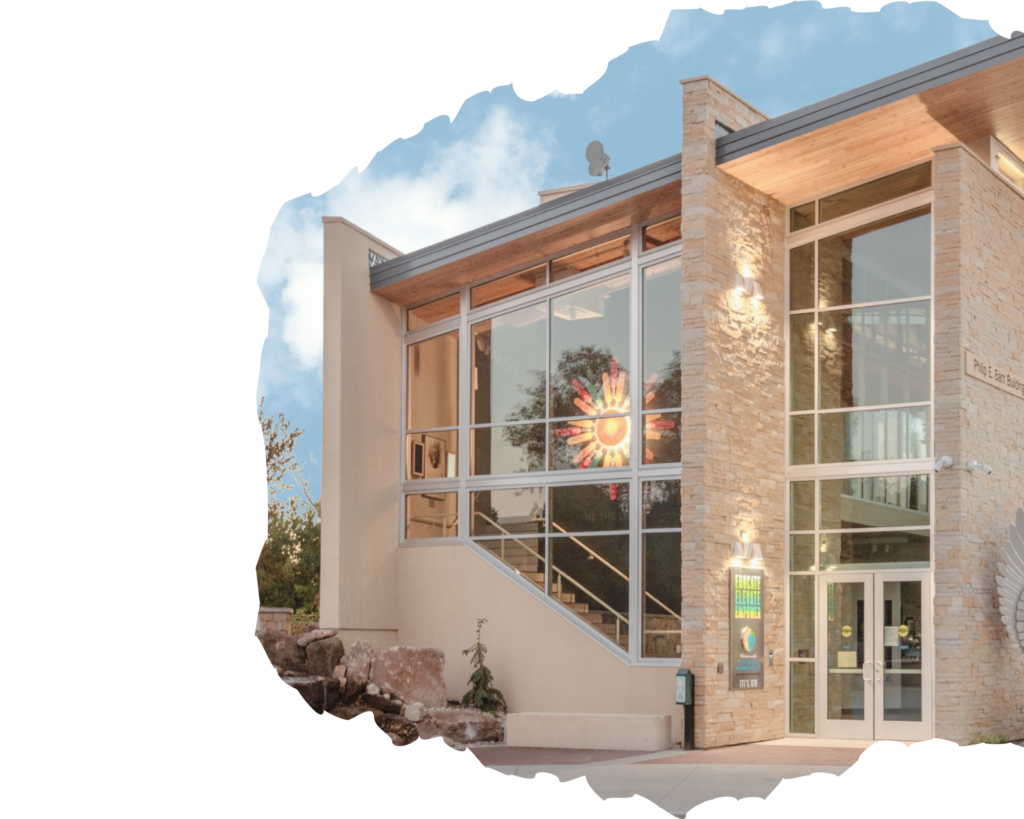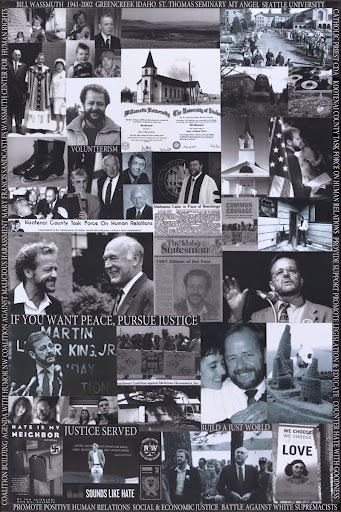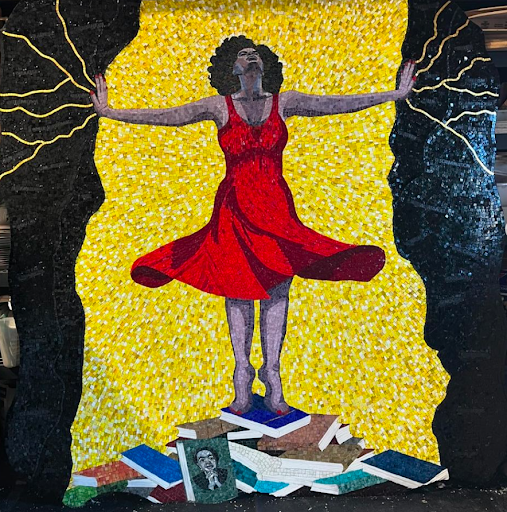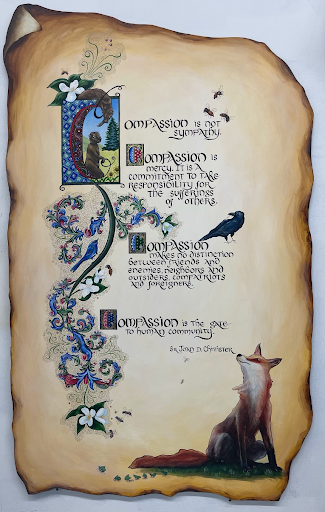Art of Human Rights
Art of Human Rights — Where Voices of Today Meet Lessons of the Past
Step inside the Wassmuth Center’s Philip E. Batt Education Building and experience how local Idaho artists use their voices — through paint, metal, glass, and words — to inspire respect, hope, inclusion, and compassion.
“Art helps us understand our humanity — and recognize it in one another.”
— Timothy P. McCarthy, Kennedy School

Plan Your Visit
Experience the Full Story — In Person
Every piece of art tells a story — and every visitor becomes part of that story.
We invite you to explore The Art of Human Rights during our weekly Community Open House.
Community Open House Hours
Every Friday
1:00 – 4:00pm
Wassmuth Center for Human Rights
Philip E. Batt Education Building
777 S. 8th Street
Boise, ID 83702
Self-guided and docent led tours available. No appointment necessary.
About the Exhibit
Featuring 28 original works by 26 Idaho artists, The Art of Human Rights invites visitors to reflect on the values that shape just and joyful communities. These are the Voices of Today — artists from diverse backgrounds sharing their stories and calling us to protect the dignity of all human beings.
When combined with the Lessons of the Past from the Idaho Anne Frank Human Rights Memorial next door, this living museum helps us imagine a future where everyone belongs.
A Few of our Featured Works

Respect by Luma Jasim
Mixed Media on Canvas
Luma Jasim is an Iraqi refugee who survived the Iran-Iraq War as a young child. Her experience — as an Iraqi, a refugee, and a woman — shapes every part of her work.
At the heart of this piece is a simple, universal gesture: holding hands. To Jasim, this act represents care, empathy, and connection.
“Wars come from when you think you are better than others,” she says. “I hope this piece invites us to respect and have empathy for those around us.”

Hope by Sue Latta
Mixed Media Sculpture
Sue Latta has spent her career as both an artist and an advocate for equal rights. In 2014, she was one of four couples who successfully challenged Idaho’s ban on same-sex marriage.
This piece, Hope, reminds us that change often starts small — with people who believe in a better future, even when it feels far away.
Latta highlights five global upstanders who inspire her:
Malala Yousafzai, Martin Luther King Jr., Anne Frank, Rosa Parks, and Harvey Milk.
Their courage gives her — and us — hope.
“The storms will get bigger,” Latta says, “but if you surround yourself with loving people, you will experience hope.”
The rainbow colors woven into this piece are a message to the LGBTQ+ community — you belong, and you are not alone.

Diversity by Micqaela Jones
Acrylic on Canvas
Growing up on the Duck Valley Indian Reservation, Micqaela Jones saw first-hand the beauty and resilience of her Shoshone-Paiute culture.
In Diversity, she uses horses as a symbol. From a distance, they may look the same — but up close, each has its own story, strength, and spirit.
Jones’s work is both personal and generational. Her grandmother was forced into a de-Indianization boarding school where Native culture was stripped away. Through her art, Jones reclaims that lost expression and celebrates what makes every person — and every community — unique.

Idaho’s Bill Wassmuth by John Bertram
Paper Collage
Bill Wassmuth was a Catholic priest turned human rights leader who stood up to hate in northern Idaho.
When the white supremacist group Aryan Nations targeted his community, Wassmuth responded with courage and compassion. Even after his home was bombed, he continued his work as an upstander — someone who sees injustice and chooses to act.
This collage tells the story of his life in images — from childhood memories to moments of resistance.
It asks us:
What will we do when we face hate?
How will we use our voice for good?

Hopes Defiance by Reham Aarti
Smalti Mosaic
Hope’s Defiance shows a figure standing strong against the darkness — using knowledge, community, and courage to break through fear and hate.
Artist Reham Aarti, a bicultural refugee from Kuwait, created this piece to honor the quiet, everyday resistance of women — especially women of color — who push back against injustice in their lives.
The figure stands on books, a symbol of learning and empowerment. Her purple skin is intentional — a color for everyone, beyond race or identity.
Hope, in this piece, is not passive. Hope fights back.

Compassion by Maryfrances Dondelinger
Acrylic on Panel
Created by the widow of Bill Wassmuth, this piece draws from the beauty of illuminated manuscripts — historic texts decorated with gold, symbols, and nature.
The artist includes Idaho’s plants and animals — ants, bees, foxes, crows — creatures who thrive by working together for the good of their community.
Quotes from Catholic nun and activist Sister Joan Chittister weave through the piece, reminding us:
Compassion is not a feeling. It’s an action.
Compassion is how we create communities where everyone belongs.
Video Gallery
Meet the Artists — In Their Own Words
Behind every piece of art is a human story.
In these short videos, these 8 featured artists of The Art of Human Rights exhibit share their inspiration, creative process, and the message they hope will stay with every visitor.
These are the Voices of Today — shaping a world where dignity, justice, and belonging matter.
Donate to the Capital Campaign
Help us continually support the Philip E. Batt Education Building.